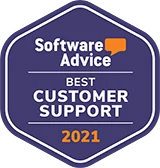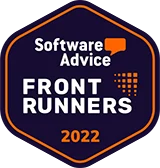Online marketing, or digital marketing, utilizes any sort of electronic device and/or the internet. With the average internet user checking their phone 58 times daily, the importance of digital marketing has increasingly grown and plays an even bigger role in the success and growth of businesses.
In this guide, we focus on observing the field of digital marketing from the perspective of consumer equipment rental businesses.
Benefits of digital marketing
Every company, from large enterprises to small mom-and-pop shops, can benefit from digital marketing. It offers a way to compete in a huge market in a cost-effective way. Digital marketing allows you to have personalized marketing, which you can execute without the need for an expensive marketing agency.
Here are some benefits of why your business should invest and focus on digital marketing:
-
It’s cost-effective. While marketing campaigns utilizing more traditional marketing channels might require a team or hiring an agency, digital marketing doesn’t. Especially with the countless tools available online that you can use for marketing and ad creation, a one-man shop can achieve significant results with just a laptop and a small marketing budget.
-
Global, targeted reach. You can reach your audience from all around the world and target your ideal buyers. With the help of SEO and retargeting, you make sure your content is seen by the right people.
-
It builds brand awareness. Even if your potential customers aren’t looking for your products or services right now, digital marketing enables you to have full control over the content of your marketing, so you can really show off your brand and stay visible even during slower months.
-
It’s personal. Especially on social media platforms, it allows you to show what the business and the people behind it are all about, all while engaging directly with your audience. This helps deepen customer relationships and build a loyal customer base.
-
You can track and measure your results. Again, thanks to a large number of different tools available, digital marketing is the most trackable and measurable form of marketing there is. It lets you know how well your campaigns are performing, based on which you can make changes accordingly to enhance the return on investment (ROI) of your marketing efforts.
-
It improves conversion rates. Digital marketing includes having a website and being mobile-friendly - so being online and having the option to book and pay via your website, for example, allows the customer experience to be short and sweet. The fewer clicks needed to check out means a higher number of conversions.
What does digital marketing include?
Digital marketing isn’t a single practice but, instead, is the sum of several elements. Some of the most common examples of digital marketing include:
Search engine optimization (SEO)
Search engine optimization (SEO) is one of the most studied fields in digital marketing. Marketers’ interest in search engine optimization is well justified, as 40% of all trackable website traffic across the Internet is generated through organic searches conducted in search engines, such as Google, Yahoo, or Bing.
As the amount of web pages on the Internet is counted in billions, the indexing and organizing done by the search engines make finding relevant websites possible for Internet surfers. Search engine optimization is a process where marketers aim to increase the visibility of their website in the search engine result pages. There are a variety of ways to improve your search engine visibility.
On-Page SEO
On-page SEO (or on-site SEO) is the process of creating website content that is expected to match the visitor's search intent and optimizing it for search engines. In the midst of on-page SEO is creating high-quality content that is valuable for anyone who is looking for information about topics that your business is related to. In addition to content creation, common ways to improve your on-site SEO are to optimize title tags, content, image alt-texts, internal links, and URLs.
If your website contains the same terms and keywords as the search query, the more relevant the search engines will find you, making it more visible on the search engine result page.
Off-Page SEO
Compared to on-page SEO, off-page SEO is all about the activities you do outside of your website. This can be done by other websites linking or promoting your website, which helps improve your website’s trustworthiness, relevance, and popularity in the eyes of the consumer and, most importantly, the search engines.
In practice, this is all about building backlinks. Backlinks are indicators of quality for search engines, meaning the more backlinks a website has, the more reliable and relevant a search engine sees the website’s content. The most common way of getting a backlink is through high-traffic website promotion, like an online magazine writing an article about your business and linking it.
Off-page SEO can also be non-related to backlinks. Generally speaking, off-page SEO relies on human behavior, so your SEO can also be improved through social media marketing, guest blogging, linked and unlinked brand mentions, as well as influencer marketing.
Technical SEO
If your technical SEO isn’t on point, it means your website is not going to rank. You want search engines like Google to be able to find, crawl, render, and index your website’s pages. So in other words, technical SEO is the process of making sure that your website meets search engines’ requirements.
Technical SEO includes a lot of things, but for the most basic things, your website needs to be crawlable for search engine robots, the website structure needs to be organized, and the site needs to be mobile-optimized, secure, and fast-loading. Basically, everything that makes it easy for Google to access your content.
Read more about SEO strategies for local businesses →
Moz has a great beginner's guide to SEO that's definitely worth checking out →
|
PROS
CONS
|
Content Marketing
Content marketing is closely tied to several other digital marketing strategies because, after all, it is content that people consume on the Internet. Whether it is social media, a blog, or a video tutorial on YouTube - it is all content.
So, how can companies utilize content marketing to drive sales? The key is to create the kind of content that is appealing to your potential customers and promote it in the channels that reach your target audience.
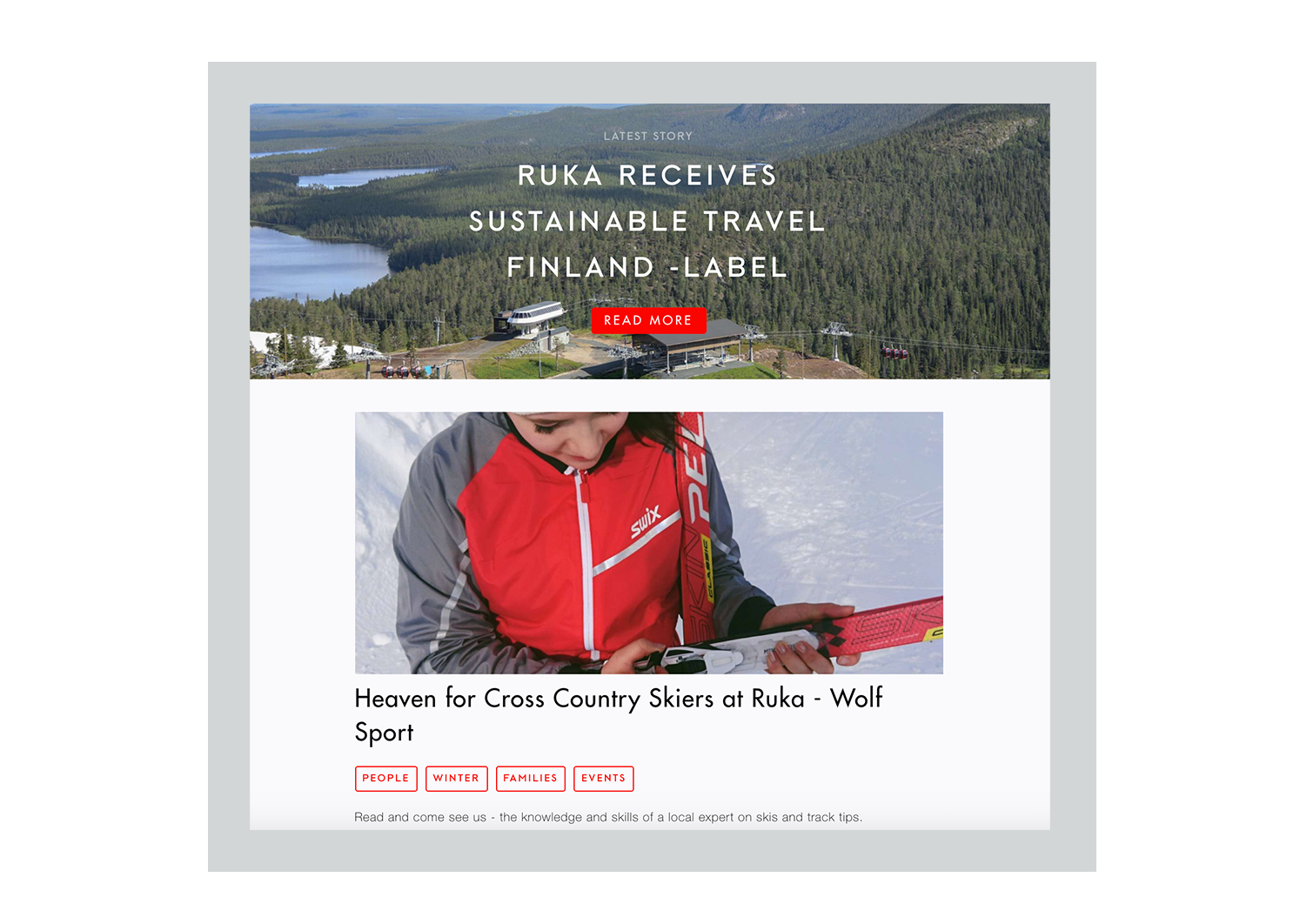
Blog
Blogging is a great way to tell your audience a little bit more about your products and services, as well as share timely news and updates. Blog articles create context and provide practical information on how to get the most out of the products the company sells or rents.
In general, only creativity is the limit when coming up with potential blog topics. For equipment rental companies, interesting topics could be equipment reviews, travel guides, and customer stories, just to name a few.
Furthermore, blogging is a key function if SEO plays an important role in your marketing mix. Using strategic keywords relevant to your business can increase your organic visibility in search engines.
E-books, guides, and other downloadable content
A popular tactic among businesses that rely on building email lists for marketing and sales purposes. Typically, these downloadable content pieces are given out for free in exchange for the person’s email address which can later be utilized in other marketing campaigns. Downloadables are more commonly used in business-to-business marketing, where the goal is to generate leads for sales. However, even for a consumer business, high-quality downloadable content that is relevant to your potential customers is always beneficial for your brand.
Video
Video marketing is constantly growing its popularity among marketers because the development of cameras (and smartphones) has made the production of professional-level videos possible even for an average Joe. Furthermore, video content is engaging. While videos get significantly more views on social media, it is also proven that people stay longer on websites with videos.
Images and infographics
Images and infographics help convey a story and make it interesting, whether it would be data, long texts, or complex concepts. The reason why visual content works is that, for example, infographics combine text and graphic elements to visually represent any piece of information. Website visitors spend 10% more time looking at pictures or other visual content compared to reading text, so our brains are naturally hardwired to prefer visuals over text.
Images and infographics are especially good for social media, as they are more eye-catching and shareable and help create more brand recognition. Additionally, infographics are a huge part of a successful SEO strategy. While creating original visual materials is time-consuming and takes a while to learn how to do, don’t be discouraged: according to a survey, 40% of all images used by marketers are stock images, and there are endless amounts of easy-to-use tools which help you to create your very own infographics.
Podcast
The popularity of podcasting has exploded during the last decade. That’s no surprise if you think about how user-friendly the form of content podcasts are. Podcasts allow listeners to consume content while they are doing something else, like commuting, cleaning up, cooking, or whatever.
To stand out from the competition and build a loyal audience, you need to come up with a topic that’s appealing to the kind of audience you consider could be your potential customers.
If you are interested in podcasting and are thinking about launching your own, here’s a pretty solid guide to get you started. If producing your own podcast is not your cup of tea, that’s okay. Because most podcasts are open for commercial partnerships, you can utilize the principles of influencer and affiliate marketing to reach your audience.
|
PROS
CONS
|
Social Media Marketing
Social media marketing is a powerful form of digital marketing as it allows companies to reach people that are or could genuinely be interested in their brand. Successful social media marketing creatively combines different forms of communication, content, and word-of-mouth strategies.
Creating a Facebook business page allows you to engage with your target audience and raise brand awareness. It’s a great way to also stay in touch with your customers, as social media is one of the first places people look at when researching a company. Having a business profile also lets you schedule posts, target specific user groups, collect and display customer reviews, and of course, create ads and analyze your success.
→ Here's how you can increase your bookings through Facebook.
While Facebook is more of an informative platform, Instagram, on the other hand, is an optimal place to showcase your brand and who you really are. It’s the perfect place to engage with your customers and build a community around mutual values.
Because Instagram is owned by Facebook, managing ads and analyzing your performance is easy and done under the same business tool.
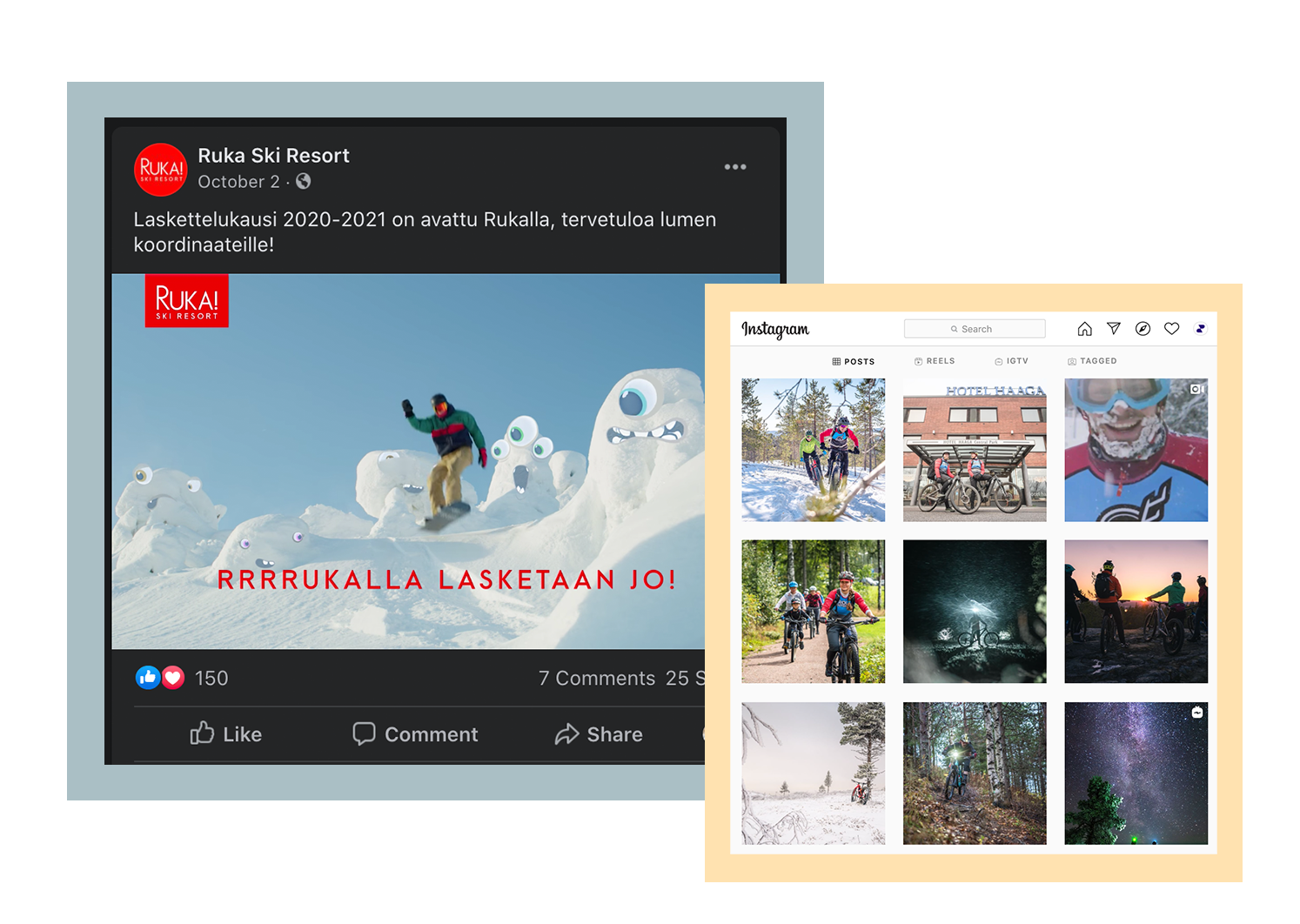 Twitter
Twitter
Twitter as a platform is a great way to put your company on the radar. While it does require high activity level, constant posting and interaction with followers and relevant hashtags can help grow brand awareness.
The best-performing business profiles are usually the ones that have gone viral for their witty communications (just look at Wendy’s), but it’s also a great platform for providing customer service.
Linkedin is no longer known as just a platform to network and search for jobs - it’s becoming more and more social and essential when it comes to marketing on social media. In fact, according to LinkedIn’s Marketing Solutions Blog, 50% of LinkedIn members report they are more likely to buy from a company they engage with on LinkedIn.
YouTube
There’s no sign of stopping YouTube - since March 2014, there’s been a 40% year-on-year increase in the number of YouTube viewers per day. Even though there is a staggering 500 hours of video uploaded every minute, Youtube really is a platform that caters to all kinds of target groups and niches.
How-to videos, teasers, Q&As, and any other type of FOMO-inducing videos (Roll Outdoors sure know how to make those) are still at an all-time high in popularity. Even if Youtube isn’t a primary marketing channel, it’s great for content sharing and showcasing your brand, especially with videos becoming increasingly the preferred type of content across all social media channels.
|
PROS
CONS
|
Pay Per Click (PPC)
Pay-per-click is a great marketing method that aims to generate more relevant traffic to your website. You can use PPC campaigns to reach completely new audiences or retarget your existing customers and previous website visitors. As the name suggests, in pay-per-click advertising, a marketer pays a fee for each click of their ads.
Search Engine Marketing (SEM) is the most popular form of pay-per-click advertising. It is not terribly exaggerated to say that everyone who has ever used Google has seen a PPC ad. Whenever you are searching for something from Google, there is a high chance that the first results have a small “Ad” mention in the corner of the search result.
Search Engine Marketing is an extremely powerful method to market your business to customers who are already searching for information about similar topics or services your company has to offer.
With 2 billion users worldwide, Facebook is definitely a platform you want to incorporate into your online marketing. In addition to Google Adwords, Facebook’s Business Manager is another major platform that offers PPC advertising opportunities, and it doesn’t require huge investments in order to get good results.
It’s also a great and flexible tool: you can create an image, video, or carousel ads, which will be displayed on a desktop or mobile device, as well as Instagram and Messenger ads. You can set your objectives (brand awareness, lead generation, traffic, or conversions) and audience (basic audience, detailed audience, or retargeted audience). The best part is that Facebook is constantly updating its algorithm, which helps with ad optimization.
Learn more about Facebook Ads and their benefits →
LinkedIn is a great tool, especially for B2B marketing purposes. With the same idea as Facebook Advertising, you can set objectives and create audiences based on your needs. However, compared to Facebook, you can create incredibly specific targeting criteria, which can be based on job titles, company names, company sizes, and LinkedIn Groups.
Display ads
Display ads are usually images, videos, or gifs that you can see on designated ad spaces on social media platforms and various websites. There are three main display ad campaigns: acquisition (clear CTAs that encourage booking or purchasing), general brand awareness, and the most common one: retargeting.
Retargeting campaigns are a great way to get your website visitors or previous customers to re-engage with your brand. Based on specific segments, you can, for example, target your general website visitors or those who left your page during the check-out phase. This way, you get to improve your customer retention rate while customers get targeted by relevant ads which match their interests.
Display ads can be created either directly through a social media channels business manager or through Adroll, which works across multiple channels and helps create cross-channel marketing solutions.
.png?width=758&name=display_ad4%20(1).png)
Native Advertising
In native advertising, your promoted content is blended into the content of the website where the ad is shown (not the same as content advertising, though). Because native advertising doesn’t look like a display ad and is seamlessly blended into the website, your readers may not realize they are consuming paid advertisements. This leads to consumers looking at native ads 53% more than display ads, creating an 18% increase in purchase intent.
Your native ad can be, for example, a promoted article in a web magazine’s news stream. Since native ads are so common, they’re relatively easy to spot. Nonetheless, if a consumer clicks on an article they’re interested in and unknowingly gets redirected to another website, they will feel misled.
|
PROS
CONS
|
Affiliate Marketing
Affiliate marketing is a sales and marketing strategy where you, the product or service owner, let ‘’affiliates’’ that are targeting the same audiences as you recommend the product to their viewers or readers. These affiliates are usually social media influencers, bloggers, large media websites, and paid search-focused microsites.
In return for the referred customers and increased sales, the affiliate earns a commission each time someone makes a purchase using either a unique link or a promo code. The commission can be based on either pay per sale, pay per lead, or pay per click, making this a very cost-effective marketing tactic that is seen more and more online thanks to the popularity of channels like Youtube, Tiktok, Instagram, and so on.
|
PROS
CONS
|
Influencer Marketing
By definition, influencer marketing is a method where brands ask people with authority within their community or audience to endorse the products or services of the brand. The influencer gets compensation in the form of money or products for promoting the brand on her channels.
For most people, the most visible form of influencer marketing is seeing athletes and celebrities being sponsored by well-known brands with deep pockets. However, in the era of social media, the number of companies, both large and small, utilizing influencer marketing has skyrocketed. This has happened because social platforms have generated a whole new group of influencers, such as bloggers, with a strong fan base, making influencer marketing more affordable and targeted even for smaller niches.
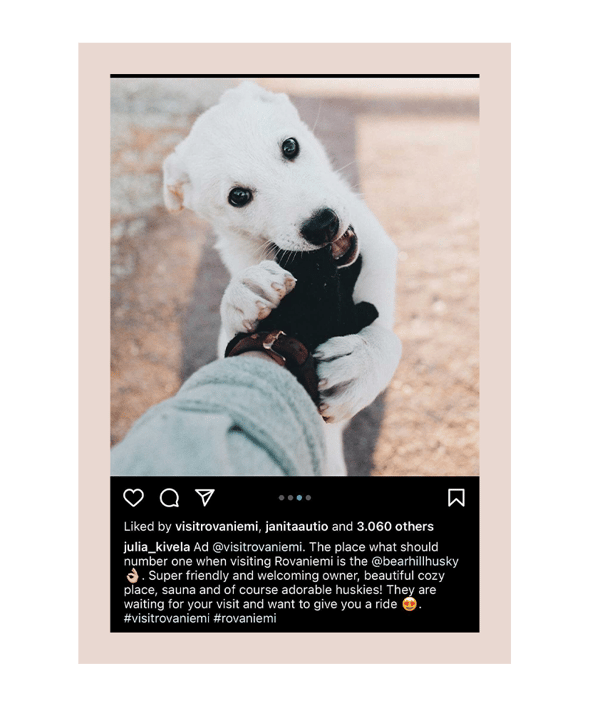
Furthermore, the forms of influencer marketing are more diverse nowadays and enable many creative ways to reach people through the influencer. Influencer marketing is a powerful strategy even by itself, but it can also be used to support your other marketing efforts, for example, in other mediums.
An important aspect of influencer marketing is to carefully select the influencers whose fan base is similar to your target audience. This way, the communication between the influencer and her fans sounds natural and not too pushy.
|
PROS
CONS
|
Email Marketing
Email marketing is one of the most traditional forms of digital marketing, and it is especially great for conversions and building customer loyalty through personalization. As an example, companies often send out their customers’ birthdays, offering discount codes or gifts. This, on the other hand, helps build customer relationships and develop customer loyalty.
While you’d think that the constant email spam would have decreased the effectiveness of email promotions over the past years, it has done the opposite. A survey reveals that 59% of respondents were influenced by email when it came to purchasing decisions, while another showed that out of 1 billion shopping sessions in 2019, email marketing had a conversion rate of 2.3%, compared to 1% for social media.
5 Reasons why you should start email marketing →
|
PROS
CONS
|
Marketing Automation
By definition, marketing automation is technology, like software, that manages and automates repetitive marketing processes across multiple channels. Automating tasks helps to focus on the bigger picture and strategy, saving a significant amount of time by not having to manually perform the same task each time. For example, you can send out a series of pre-written emails at regular intervals.
Marketing automation works in a ‘’if this, then that’’ methodology, meaning you can create workflows that target people based on their behavior and preferences. This way, you can send personalized messages based on the customers’ previous purchases, for example, which again leads to increased customer loyalty. In fact, 80% of consumers are more likely to make a purchase when brands offer personalized experiences.
|
PROS
CONS
|
Online PR
Online PR’s (also known as digital PR) goal is to improve SEO through building quality links on relevant publications. It uses a link-building tactic that involves a piece of creative content, which includes backlinks to your website.
For example, an online PR piece could be an article in the local sports magazine with links leading back to your sports rental shop’s website. While increasing brand awareness, the backlinks also help improve your website’s search rankings on Google.
There are also easy ways to measure the success of an online PR campaign:
- Website traffic
- Engagement
- Search rankings
- Conversions/sales
|
PROS
CONS
|
Mobile Marketing
When you think about the term ‘’mobile marketing’’, the first thing that might come to mind is cold calling and marketing text messages. While these still are effective and relevant marketing tactics, they should be utilized with caution. Especially during times like these, when the importance of security and privacy is at an all-time high, unauthorized calls and text messages can feel intrusive and ultimately have a negative effect on the customer.
In the meantime, with 91% of internet users using mobile phones to go online at least some of the time, it creates a unique opportunity to create omnichannel engagement. Everything from in-app ads, and social media, to website ads, being mobile active means a bigger possibility of reaching your target audience. Just consider this: 66.5% of the global population have smartphones, so optimizing your online presence and marketing efforts is growingly important.
|
PROS
CONS
|
Conversion Rate Optimization (CRO)
A conversion rate optimization is the percentage of visitors who completed a goal achievement, whether that would be registering on your website or going through with their purchase.
Conversion rate optimization, or CRO, is the process of constantly enhancing your website and content in order to boost your conversions. This means making sure your website is designed to be appealing to your customers. Since conversions can happen anywhere like the homepage, price page, and blog, it’s even more important to have your website all-around optimized for conversions. This means having a well-structured and designed website with relevant content and clear CTAs.
Creating a Marketing Strategy
Just like with anything you do with your business, you need a clear plan and strategy for your marketing efforts. Especially because there are so many different aspects of both offline and online marketing to take into account, realistically, you would need a whole marketing army to get all of the previously mentioned things executed.
The good thing is that you don’t need to implement each and every one of these practices. This guide is here to familiarize you with the different possibilities digital marketing offers and for you to gain a better understanding of which methods would benefit your business the most.
Fortunately, it’s not too complicated to come up with your own effective marketing strategy. Here are the steps to get you started:
-
Create buyer personas
Creating buyer personas gives you a better idea of who your current customer base consists of and how you’re reaching them, as well as defining your potential customers and ways to reach them. Buyer personas include everything from age, location, hobbies, and behavioral patterns. Having clearly defined personas or target audiences helps create the right marketing strategy for your business.
-
Choose your channels
As we’ve mentioned before, you would need a small army in order to implement every single thing in digital marketing. Fortunately, you don’t need to, and you can choose your channels based on what you already have and are familiar with (eg. social media) and slowly start to build your marketing efforts according to your resources and goals.
-
Research your competitors
By researching and benchmarking your competitors, you can identify and highlight your competitive advantage and really differentiate yourself from competitors. It also helps you understand the market and trends better, as well as see what works best and where your marketing efforts might be lacking.
-
Decide on your messaging & creatives
You might already have your branding down, like colors and logos, which is great! With marketing, however, you also need to decide on all of the visual elements and copies. Of course, resources have a big impact on whether you and your teams create your own visuals or if you use the services of a professional, either way, having a clear vision of what your brand should sound and look like is a must.
Having your buyer personas done really helps with this, as this gives a better idea of what the customers find most appealing: fun and approachable, or professional and strict, for example.
-
Set SMART goals
If you’re unfamiliar with SMART goals, it stands for:
Specific (simple, sensible, significant), Measurable (meaningful, motivating), Achievable (agreed, attainable), Relevant (reasonable, realistic and resourced, results-based), Time-bound (time-based, time-limited, time/cost limited, timely, time-sensitive).
Having SMART objectives helps create a clear roadmap, which makes it easier to start implementing any type of plan or course of action. Especially if you’re just getting started with your marketing, it helps everything from getting too overwhelming.






